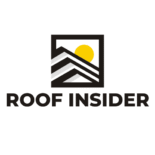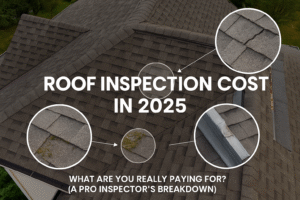Roof Inspection Cost in 2025: What Are You Really Paying For? (A Pro Inspector’s Breakdown)
How Much Does a Roof Inspection Cost?
In 2025, a standard physical roof inspection for a residential home in the U.S. typically costs between $200 and $600. More advanced inspections using drones or infrared technology can range from $250 to $700 or more. The final price depends heavily on your roof’s size, complexity, material, and your specific location.
As a certified home inspector with a 20-year background as a roofing contractor, I’ve seen homeowners save tens of thousands of dollars by making a small, smart investment. I once had a client who hesitated to pay $350 for an inspection on a house they were buying. That inspection uncovered subtle, systematic hail damage the seller’s roofer had missed. The seller’s insurance ended up paying for a brand new $18,000 roof before closing. That $350 fee wasn’t a cost; it was the best investment they ever made.
This guide will break down every aspect of roof inspection costs. We’ll explore the national averages for different types of inspections, the key factors that can raise or lower your price, what a comprehensive inspection checklist should always include, and the critical difference between a “free” estimate and a paid, professional assessment.
Roof Inspection Cost Breakdown by Type
Not all inspections are the same. The tools and techniques used will affect the price. Here’s a look at the most common types and their typical cost ranges for a standard single-family home in 2025.
| Inspection Type | Average Cost Range | Best For |
|---|---|---|
| Physical (On-Roof) Inspection | $200 – $600 | Most residential homes, annual checkups, pre-purchase inspections. |
| Drone Inspection | $250 – $700 | Very steep roofs, fragile materials (slate/tile), initial storm damage assessment. |
| Infrared (Thermal) Inspection | $400 – $800+ | Detecting hidden moisture, verifying leaks, assessing energy loss. |
| Commercial Roof Inspection | $500 – $2,000+ | Businesses, large flat roofs, multi-unit properties. |
The 7 Major Factors That Influence Your Roof Inspection Cost
Why is there such a wide range in pricing? Because no two roofs are alike. Here are the key variables an inspector considers when giving you a quote.
- Roof Size and Square Footage: This is the most straightforward factor. A larger, 3,500 sq. ft. roof simply takes more time to inspect thoroughly than a 1,500 sq. ft. roof.
- Roof Pitch (Steepness): A low-slope, easily walkable roof is the simplest to inspect. Once the pitch exceeds a 6/12 or 7/12, it requires more extensive safety equipment (like the best roof harnesses) and more time to navigate, increasing the labor cost.
- Roof Complexity: A simple gable roof is quick to inspect. A complex roof with multiple dormers, valleys, hips, and different levels requires meticulous checking at every joint and transition point, which adds significant time.
- Roofing Material: An asphalt shingle roof is standard. However, inspecting specialty materials requires more care and expertise. Fragile materials like slate or clay tile require careful movement to avoid breakage. The specialized knowledge needed for inspecting standing seam metal roofs also commands a higher fee.
- Geographic Location: Labor rates and business operating costs vary dramatically across the United States. An inspection in a high-cost-of-living area like San Francisco or Boston will naturally cost more than the same inspection in a rural part of the Midwest.
- Type of Inspection: As shown in the table above, a basic physical inspection is the baseline. Adding drone photography for inaccessible areas or thermal imaging to find hidden leaks will add to the total cost but can provide invaluable data.
- The Report Itself: A basic checklist is one thing, but a detailed, multi-page report with annotated photos, recommendations, and cost estimates for repairs is a professional work product that takes time to compile and adds value to the service.
What Are You Paying For? A Pro Inspector’s 10-Point Checklist
A professional inspection is a comprehensive, top-to-bottom assessment of your entire roofing system. When you pay for an inspection, you are paying for an expert’s time and knowledge to meticulously check these critical areas. Here’s what should be on every inspector’s list:
A Professional Inspection Covers:
- Structural Integrity: Checking for sagging ridge lines or decking from the exterior and interior (attic).
- Material Condition: Looking for cracked, missing, or hail-damaged shingles; checking the finish and for rust on metal panels. Knowing if you can paint a metal roof is part of assessing its condition.
- Flashing & Penetrations: Meticulously inspecting the seals around chimneys, vents, pipes, and skylights—the #1 source of leaks.
- Gutter System Health: Ensuring gutters are securely attached, free of debris, and sloped correctly to divert water away from the foundation.
- Workmanship Quality: Looking for signs of poor installation, like improperly driven nails (“high nails”), incorrect shingle overhang, or sloppy sealant work.
- Attic Inspection: Checking the underside of the roof deck for water stains, rot, and signs of active leaks.
- Ventilation Analysis: Ensuring soffit and ridge vents are unobstructed and providing proper airflow to prevent heat and moisture buildup.
- Pest & Biological Growth: Looking for signs of pests, from knowing that roof rats are dangerous to identifying entry points, and checking for moss or algae that can degrade shingles.
- Minor On-Site Repairs: Some inspectors may offer to fix small issues on the spot, like applying the best roof sealant to an exposed nail head.
- A Detailed Written Report: This is the final product—a document with photos, detailed findings, and actionable recommendations.
The “Free” Roof Inspection: Understanding the Catch
You’ve seen the ads: “Free, No-Obligation Roof Inspection!” Let me be clear from an industry perspective: there is no such thing as a truly “free” inspection. These are sales assessments offered by roofing companies. Their goal is not to give you an unbiased report; their goal is to sell you a new roof.
While a reputable roofer can certainly provide an accurate estimate for a needed replacement, there’s an inherent conflict of interest. An independent inspector’s only job is to provide you with objective facts. They have nothing to sell but their expertise. A paid, independent inspection is your best tool for getting unbiased information, especially when dealing with a potential insurance claim.
Essential Tools for a *Safe Ground-Level* Assessment
As a safety professional, I never recommend homeowners walk on their own roofs. The risks are simply too high. However, you can and *should* perform regular assessments from the ground. Having the right tools makes this process far more effective.
1. High-Quality Binoculars: Celestron Nature DX ED
Your eyes are your best inspection tool, but they need help. A quality pair of binoculars like these allows you to get a clear, close-up view of your shingles, flashing, and gutters from the safety of the ground. You can spot cracked shingles, nail pops, and sealant failure without ever touching a ladder. This is the single most valuable tool for a DIY assessment.
Check Price on Amazon2. High-Lumen Flashlight: Anker Bolder LC90
Your attic holds the secrets to your roof’s health. A powerful flashlight is essential for inspecting the underside of the roof deck. The bright, focused beam allows you to spot subtle water stains, daylight peeking through nail holes, or the beginnings of mold growth that would be invisible in the dim light. This is a must-have for the interior portion of your inspection.
Check Price on Amazon3. Consumer Drone (Optional): DJI Mini 2 SE
For tech-savvy homeowners, a user-friendly drone is the ultimate DIY inspection tool. It provides a safe, bird’s-eye view of your entire roof without the risk of climbing. You can capture high-resolution photos and videos of hard-to-see areas like chimneys and valleys, which you can then show to a professional contractor. This is the closest you can get to a professional drone inspection.
Check Price on AmazonFrequently Asked Questions About Roof Inspections
How often should I get my roof inspected?
As a general rule, a professional inspection every 1-3 years is recommended for most roof types. You should also always have an inspection performed after a major weather event, like a hailstorm or hurricane. This proactive approach allows you to catch small problems before they become catastrophic leaks.
Will a roof inspection lower my homeowners insurance premium?
In some cases, yes. Providing your insurance company with a clean inspection report or a “roof certification” from a licensed professional can sometimes qualify you for a discount, especially on older homes. It demonstrates that you are proactively maintaining your property and reducing the insurer’s risk.
What’s the difference between a roof inspection and a home inspection?
A standard home inspection includes a visual assessment of the roof as one of many components. A dedicated roof inspection is a much more in-depth, specialized examination of the entire roofing system, often performed by a certified roof inspector or experienced contractor. If a home inspector flags potential roof issues, they will almost always recommend a specialized roof inspection.
What if the inspector finds damage?
The inspector will provide a detailed report outlining the issues, the recommended course of action (e.g., repair with roofing tape, full replacement), and often an estimated cost. This unbiased report is a powerful tool you can use to get accurate quotes from multiple roofing contractors and to file a claim with your insurance company if the damage is storm-related.
Final Verdict: An Inspection is an Investment, Not an Expense
While it might be tempting to save a few hundred dollars by skipping a professional roof inspection, it’s one of the most financially reckless decisions a homeowner can make. The cost of an inspection is minuscule compared to the potential cost of undetected leaks, water damage, mold remediation, and structural repairs.
Think of it as a doctor’s checkup for the most critical protective feature of your home. By paying for an expert’s unbiased opinion, you are arming yourself with the knowledge needed to make smart, informed decisions about maintenance, repairs, and your home’s long-term health. It’s a small price to pay for peace of mind and the protection of your biggest asset.





